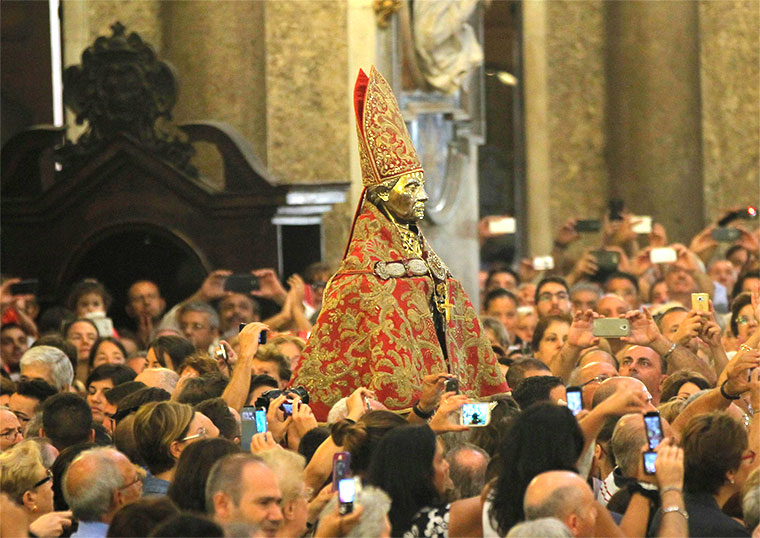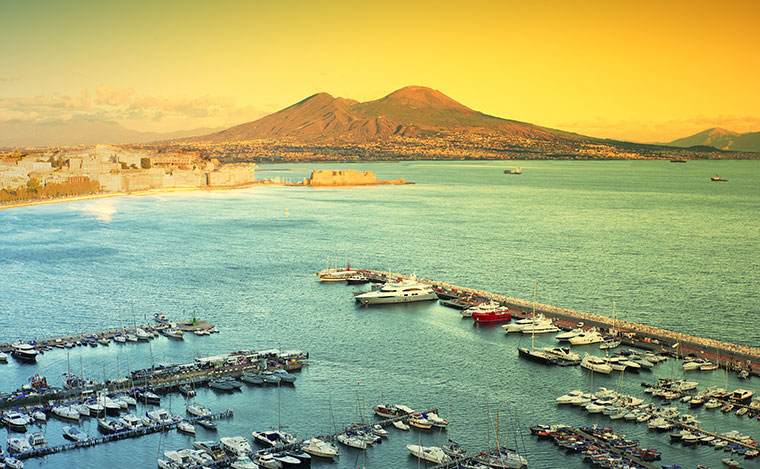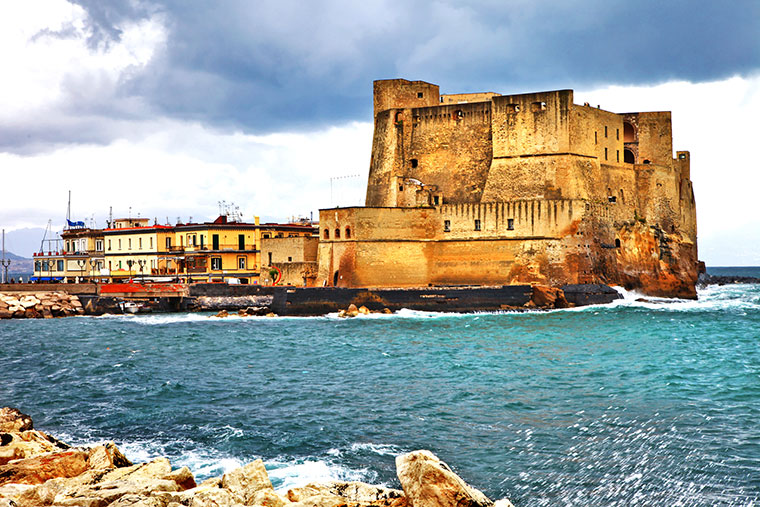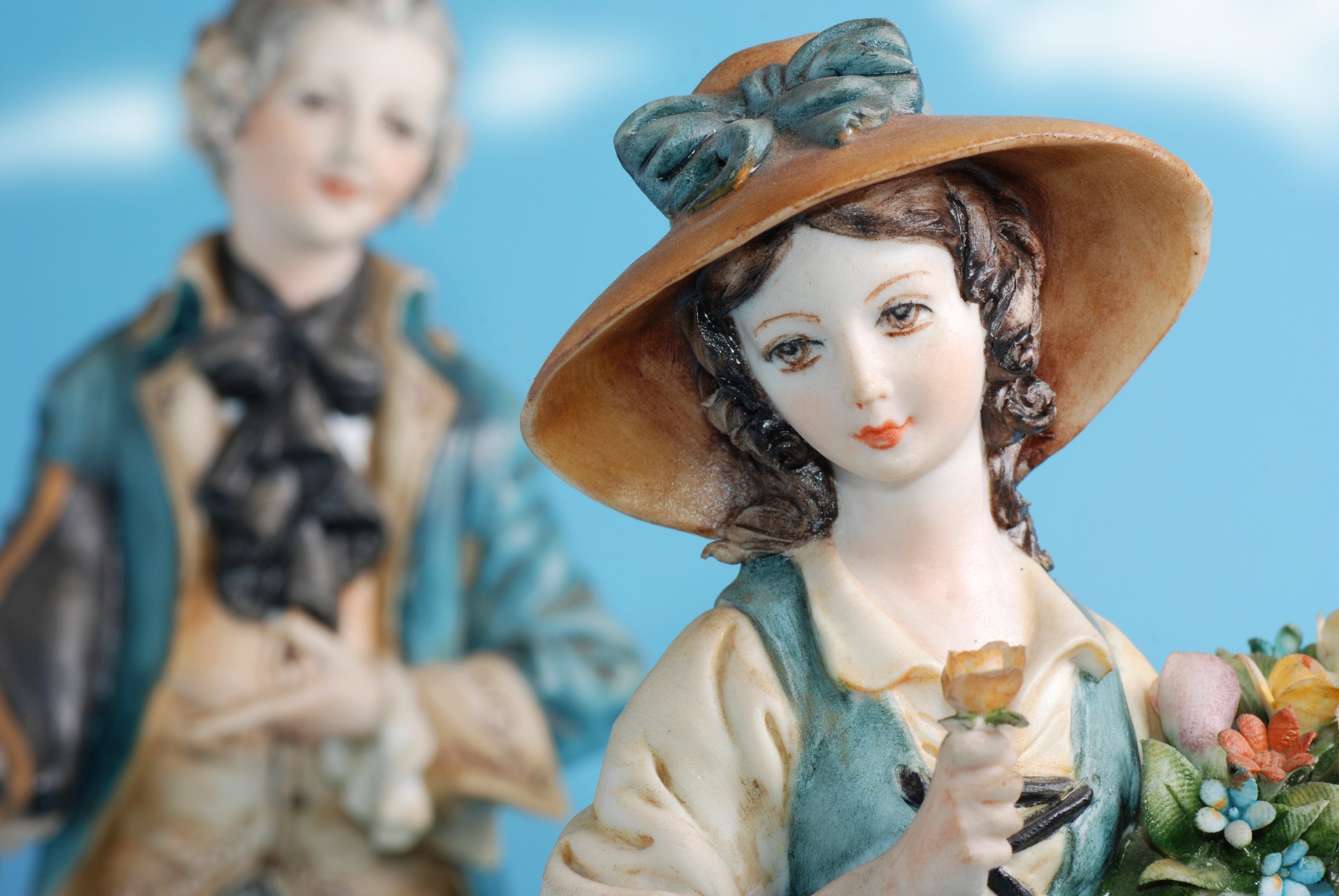Magic, mystery, a thirst for wonders and for the unknown, and a pagan sun-religion. Naples metabolizes three thousand years of culture and civilization, spread out over a corner of the Mediterranean that tells the story of Greeks, Romans, Carthaginians, Normans, Saracens, Spaniards, and French.
An ambiguous nature envelops Naples, however wonderful in color and climate it might be, for thundering within the bowels of the earth is the mysterious fury of the volcano and the earthquakes that in the past have buried entire nations. For this very reason, in order to appease the sudden fury of nature, friends and enemies, pagan rituals and ancient magic, must coexist and be handed down through the spirit of the people by means of enchantments and exorcisms, which, in some mysterious way, have the power to appease the force of nature.

The mystery of excellence in Naples is called liquefaction of the blood of San Gennaro: twice a year the blood contained in vials liquefies when it comes into proximity with the head of the martyr which is guarded in the reliquary. Every time the liquefaction of the blood occurs, as mysterious as it is inexplicable, it is regarded as a prophecy, one in which the whole city partakes with great trepidation.
Surrounded by the 25 patrons, San Gennaro goes out in procession on the streets of the ancient center amidst the almost pagan pleas of the people. In Naples it is possible to trace the route of the mystery: moving along the Via dei Tribunali, the ancient Decumano of Neapolis, the procession makes its way to the Church of Purgatory in Arco. A long staircase leads to a hypogeum populated by anonymous skulls which have been transformed into saints by the devotion of the people. The most revered of which is Lucia’s skull, called the Princess, and is said to appear in dreams on Mondays, the day of the lunar goddess, to announce gratitude and rewards to her following.
Here we are in the heart of the mystery, the Sansevero Chapel, which is linked to the figure of Prince Raimondo of Sangro, an alchemist, magician and necromancer. Here we find a real miracle of art: Giuseppe Sammartino’s famous veiled Christ, for the marble veil over the deposed Christ is able to simultaneously cover and completely reveal his body.
The Neapolitan Chronicles document the heartbreaking cries of the beautiful Maria of Avalos who was killed along with her lover, Fabrizio Carafa, at Sangro Palace by the assassins sent by her husband, Carlo Gesualdo, prince of Venosa.
On moonless nights you can see the ghost of Mary wandering between the Obelisk of St. Dominic Maggiore—in whose convent the theology of Thomas Aquinas and Giordano Bruno was taught—and the door of Palazzo San Severo.
In Spaccanapoli, somewhere along the long road that cuts the body of the city in half, we find the 600th century church of San Gregorio Armeno, where the nuns guard the vial of blood belonging to Saint Patricia, which melts every single week rather than only twice a year. A descendant of Emperor Constantine, Saint Patricia, born in the fifth century, is the patroness of the city. In the labyrinth of alleyways that ascend from Piazza San Domenico Maggiore, Via San Giovanni in Porta was titled “Tria Fata,” for the Three Fates who oversaw the reign of the dead, but is now called the “Healthcare district,” which was immortalized by the extraordinary Eduardo De Filippo in his tragic comedy of the same name.
Passing between hypogeums, churches and aristocratic palaces you finally come to Piazza delle Fontanelle. Here you can find the giant grotto-vault where movie director Roberto Rossellini shot one of the famous scenes in his film, Journey to Italy.
In Vico Tre Re, on the 6th of each month, women who cannot have children sit on the miraculous chair of Saint Mary Francis of the Five Wounds.

On the beautiful seafront, away from all the traffic, is Castel dell’Ovo. It seems that in secret, the poet Virgil kept charge of an enchanted egg that had the task of protecting the city from the fires of Vesuvius. The very fate of Naples depended on the reliability of this egg, which was guarded within a glass jug, which in turn was enclosed within a metal cage.
Virgil, magician and miracle worker, the Latin poet of the Aeneid, was considered to be the entrusted guardian of the city before San Gennaro. As for the rest of the region, everything that stretches from Naples to the Phlegrean Fields, is marked by the prodigious works of the famous poet: the construction of the hot baths of Baia, and the breach of the neapolitan crypt which would be accomplished with the aid of a host of demons.
The myth of Ulysses, the Sirens, the seduction, the death, the long journey to knowledge: everything passes through this vast territory beneath the shadow of Vesuvius, extending to Lake d’Averno, where the ancient Romans had placed the entrance to The Kingdom of the Infernal.
The volcanic crater, born 4,000 years ago, 34 meters deep in the center, contains gloomy, dense, fearful waters: it is said that the carbon dioxide and gases which were exhaled were causing the birds to die (its name would come from the Greek word aornon, meaning a “place without birds”).
The home of Syncretism, Naples and its surrounding territory are both cheerful and bloody, unique and surprising, full of life and pleasure, a land of contrasts and contradictions where the thirst for wonder and magic, the unknown and the curious blend with the seductive sun-religion of the pagans.
Because life in these places, in the end, is still conditioned and directed by an ancient wisdom, which continually swings between paganism and archaic Christianity, revealing strong bonds between a remote past and a present in which these ties were never completely eradicated.






























